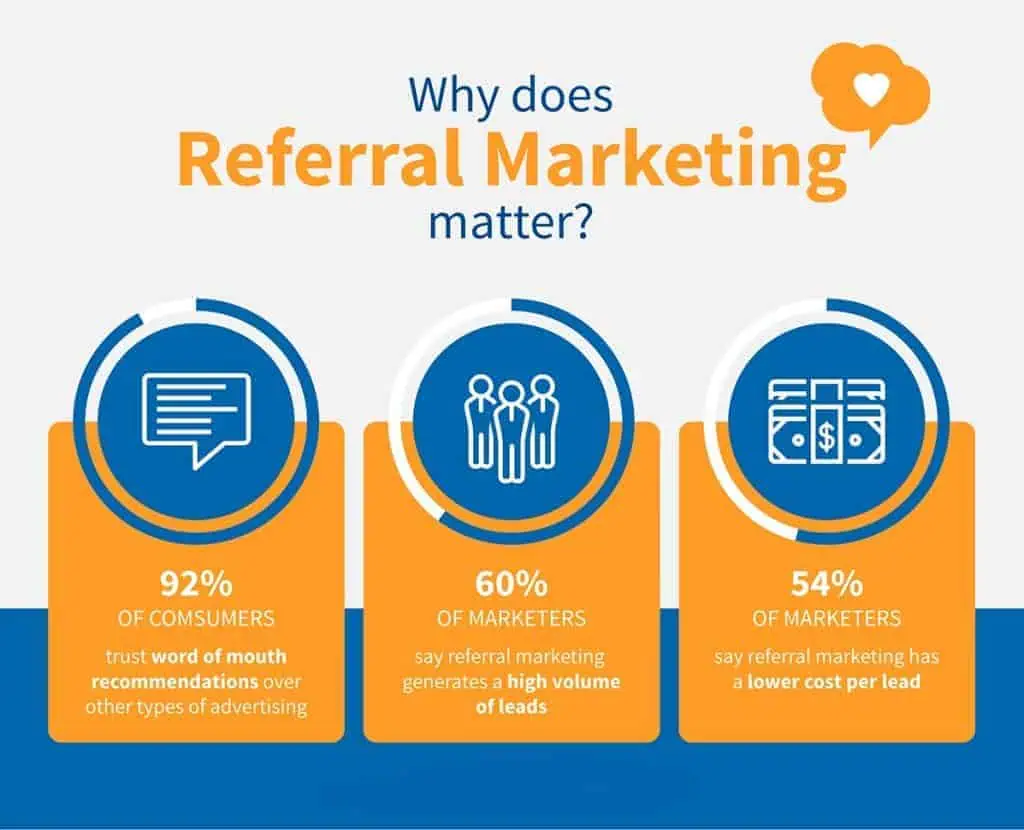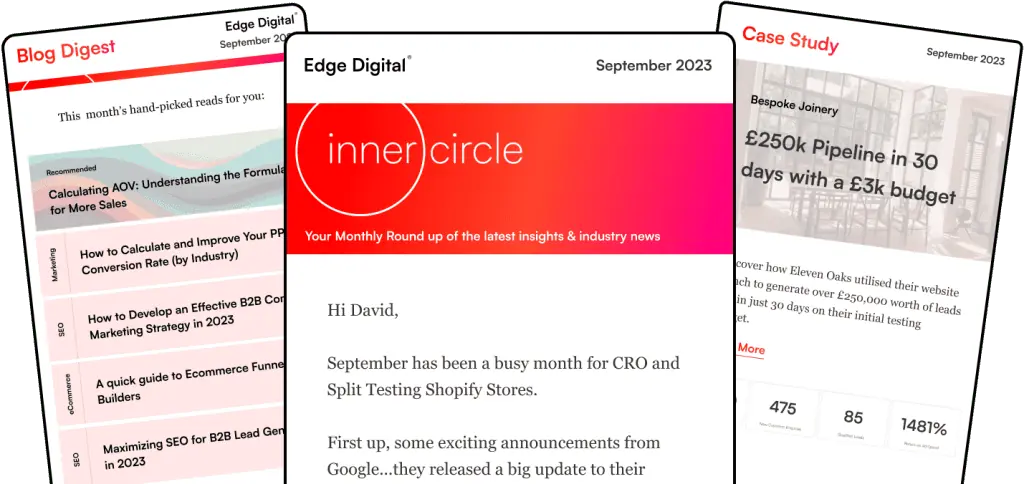Discover the ultimate secret to unlocking your ecommerce business’ full potential: leverage digital advertising to pick out the best marketing channels that suit both your target audience and budget. This guide will take you through a variety of options like social media, email campaigns, paid search engine ads and content creation, so find what works for you! Tap into these tools in order to grow an engaged customer base while boosting sales at the same time.
Key Takeaways
Decode the best ecommerce advertising channels to maximize online sales.
Balance budget and impact through paid search engine marketing, such as PPC advertising.
Harness the power of social media marketing, email automation and direct mail campaigns for maximum return on investment.

Decoding the Best Ecommerce Advertising Channels
For any ecommerce business to thrive, it is essential that they make the right choices when selecting digital marketing channels. This will involve understanding all possible options and creating a customised plan which communicates your message effectively to your desired target audience. This strategy should ensure results are achieved according to set objectives while also ensuring you receive optimum return on investment (ROI).
Paid marketing channels, such as social media ads, Google Ads, and display advertising, are crucial for achieving targeted reach and improved marketing ROI. Investing in these platforms effectively can significantly enhance your marketing efforts.
The following article delves deeper into different strategies for successful ecommerce marketing using various channels available today – enabling online sales growth in an increasingly competitive market.
Defining Digital Marketing Channels
A marketing channel is an effective way to reach and engage with your target audience. Display advertising is a form of paid advertising where ads are placed on third-party websites. There are several digital channels available that can be used for promotion, such as email marketing, content marketing, SEO (Search Engine Optimization), social media ads or PPC (pay-per-click) advertisements. Ecommerce businesses who employ these strategies have been successful in drawing organic traffic from potential customers via search engines on their websites. For example, Urban Americana vintage furniture store has achieved high rankings through its all furniture collection page which was effectively optimized using Search Engine Optimization techniques tailored to specific platforms across different forms of digital/social media usage offers a unique opportunity for audiences. It pays off investing in optimizing the ecommerce website’s appearance when pursuing better visibility online along with more established tried paid advertising methods offered by various popular networks like Facebook & Google.
How and why are advertising channels so important for my ecommerce store?
Advertising channels are crucial for e-commerce because they directly influence the visibility and reach of online stores. With the right channels, businesses can target specific demographics, ensuring that their products are seen by potential customers who are most likely to make a purchase. Platforms like Google Ads, Facebook, and Instagram offer sophisticated targeting options that allow e-commerce businesses to tailor their ads based on user behavior, interests, and search history. This precision targeting increases the chances of converting ad viewers into buyers, driving sales and revenue growth.
Furthermore, effective use of advertising channels helps e-commerce businesses build brand awareness and customer loyalty. Consistent presence across multiple platforms, such as social media, search engines, and email marketing, keeps the brand top-of-mind for consumers. This multi-channel approach not only attracts new customers but also engages existing ones with personalized offers and updates. By leveraging the strengths of each advertising channel, e-commerce businesses can create a comprehensive marketing strategy that enhances customer experience, boosts engagement, and ultimately, drives sustained business growth
Identifying Your Target Audience

For successful ecommerce advertising, it is essential to accurately identify your target audience. You can achieve this by doing comprehensive research into their demographics and psychographics in order to develop a tailored marketing strategy that will resonate with them most effectively.
Utilizing free marketing channels, such as social media, SEO, and word-of-mouth marketing, is crucial for brands with limited budgets. These channels allow businesses to promote themselves without incurring significant costs, effectively reaching their target audiences through organic content sharing.
Creating buyer personas provides knowledge about the people you are trying to reach. These representations draw on customer feedback and data gathering activities as well as help ensure targeted messaging reaches out potential customers successfully, leading not only to higher conversion rates but also increased sales performance coupled with better returns from investment spent on promoting efforts.
Balancing Budget and Impact
To maximize the effectiveness of your marketing efforts and ensure a good return on investment, it is important to achieve a balance between budget and results. To do this effectively, set out clear objectives for your business and use available financial resources accordingly in order to select an appropriate mix of advertising channels.
Paid search engine marketing such as PPC can be used with great success here. By strategically selecting keywords that are relevant to what you wish to promote or sell online, targeting those individuals who would likely show interest in said items/services via close monitoring and adjusting ads spend when necessary, all these steps help create effective campaigns which offer real ROI.
Harnessing the Power of Social Media Marketing
Social media marketing is a great way to reach more people for an ecommerce business. You can use it to promote brand visibility, collaborate with influencers and garner direct sales from the networks you’ve chosen. Crafting exciting campaigns that capture attention, as well as tracking their successes on social media platforms, are all important steps needed in order to make full use of this powerful tool.
Video marketing is another powerful marketing channel that allows brands to engage audiences through video content shared on platforms like YouTube and TikTok. It has advantages over traditional content, such as enhancing brand awareness and customer engagement due to its visual nature and shareability.
Choosing the Right Social Media Platforms
When it comes to promoting ecommerce businesses, selecting the appropriate social media platform is essential for reaching your intended audience and achieving marketing goals. Facebook, Instagram and Pinterest can be beneficial tools as they provide increased brand visibility, enable communication with customers and advertise products successfully.
To identify which platform is suitable requires an understanding of your target market – such as leverage LinkedIn to connect with professionals or appealing to Generation Z on Instagram/TikTok by matching their preferences & habits accordingly in relation to your strategy plan.
Crafting Engaging Social Media Campaigns
For successful social media advertising that can have a major influence on your ecommerce business, crafting engaging campaigns is key. For example, Slate & Tell, a small jewelry brand, used visually attractive ads with an accompanying call to action (CTA) in TikTok which resulted in reaching 4 million users and doubling their ad spend. Consistency and authenticity must be at the forefront of all marketing efforts as this will allow you to connect more easily with existing customers or potential clients. Creating compelling copy along with captivating images/videos also plays into gaining traction through these channels while posting during optimal times Increases reachability rates for boosting brand awareness and consequently increasing sales numbers too.
Measuring Success on Social Media
Assessing the success of your social media presence is a must when it comes to improving and maximizing returns on investment. Monitoring user involvement, reach as well as conversions can give an idea for areas that may need enhancing and thus empower you with data-driven decisions in order to upgrade your marketing strategy.
With analytics tools such as Facebook Insights at hand one will be able to appraise their endeavours accordingly. By exploring metrics like engagement rate, exposure, impressions & cost per conversion, meaningful insights regarding how effective your strategies are would become available hence leading to being able to regulate plans so they’d acquire full potentiality.
Email Marketing: Personalization Leads to Conversion
Email marketing provides many opportunities to strengthen customer relationships, upsell and cross-sell products, as well as cultivate a loyal base. Through cultivating an expansive email list segmented for tailored communication and creatively incorporating automated emails into your strategy, you can elevate sales volume while fostering deeper consumer bonds.
Building a Robust Email List
Email marketing relies on a reliable list of contacts in order to be successful. To acquire this, there are effective strategies you can take advantage of such as providing incentives and lead magnets that will attract new subscribers or incorporating pop-ups and smart bars on your website for capturing email addresses. Offering engaging content is also an excellent way to encourage sign-ups. These tactics allow businesses to form a powerful database comprised of existing customers while giving them the opportunity cultivate leads into regular buyers with discounts plus newsletters forms that they don’t want to miss out on!
Segmenting Audiences for Tailored Messaging
Email segmentation is a key aspect of any successful email marketing campaign. It allows you to tailor your messages, making them more relevant and engaging for different customer groups based on variables such as demographics, past purchases, level of engagement or position in the sales funnel. This type of market segmentation enables personalized messaging that speaks directly to each group’s interests and needs. This approach helps ensure that the right message is sent at just the right time- driving better results for your business overall.
Innovating with Email Automation
Ecommerce firms can enhance their marketing campaigns and efforts through automated emails. This technology allows them to tailor the content, subject line, and body of each email according to customers’ data. Automated scheduling systems help send out timely messages at a suitable time for maximum impact on subscribers while improving accuracy and efficiency of promotional activities significantly. Email automation also saves companies effort in sending personalized communications which ultimately result in an improved customer experience overall.
Paid Search Engine Marketing: A Fast Lane to Visibility
Through the use of paid search engine marketing, it is possible to quickly boost visibility and website traffic. With this method, you can be placed at the top of organic results for your desired keyword or phrase. Video ads are also crucial in modern marketing strategies, driving brand awareness and revenue growth across platforms like Instagram and YouTube. Crafting persuasive ads, optimizing ad expenditure through PPC strategies and studying performance outcomes will help maximize online presence while driving more visitors to an ecommerce site.
Crafting Compelling Search Ads
In order to create successful search ads, it is important to make sure the text of your ads matches up with user queries. Speak directly to your target audience and employ tactics that evoke emotions for maximum effect. This could include utilizing numbers, specific brands or other eye-catching elements. Being aware of what value you can provide customers through market research will also be beneficial in crafting compelling ad copy which ultimately encourages clicks on search engine advertisements leading more traffic to an ecommerce website.
Other key methods used when targeting these types of online campaigns are remarketing lists for search advertising (RLSAs), a combination approach consisting of both social media and searches as well as contextual or demographic based marketing techniques including keeping track of audiences using data tracking plus deploying retargeting functions respectively. Selecting fitting keywords and allocating relevant approaches geared at reaching the correct people ensures Search Ads obtain their desired result along with best possible ROI associated transactions bringing favorable results by implementing effective strategies like those mentioned above wisely.
Optimizing Ad Spend with PPC
Maximizing the ROI of PPC campaigns requires setting clear goals, managing spending judiciously and carefully evaluating ad group performance in order to refine the creative. Crucially, keyword research is an essential part of this process. It enables businesses to identify suitable keywords with a high search volume but low competition that can be effectively targeted while avoiding those that are redundant or unlikely to bring results. This allows companies to put their money where they expect it will yield more click-throughs and conversions – optimizing its effectiveness for greater efficiency in its investment spend.
Analyzing PPC Performance
To make the most of your marketing efforts, PPC performance analysis is essential. Through tools like Google Analytics, you can measure how effective a campaign has been and calculate important metrics such as cost per click (CPC) or return on investment (ROI). To maximize ROI, these are some steps to take: prioritize key indicators for success, analyze data from campaigns, compare results against predetermined goals – all driven by information gathered through evaluation. Optimize future plans accordingly.
Content Marketing: The Long Game for Brand Loyalty
For any successful ecommerce business, content marketing is a must. Engaging and helpful material can help to build brand commitment, attract potential customers, and drive sales growth.
Creating an effective strategy for your digital campaigns while diversifying the types of content produced as well as focusing on SEO optimization are all important actions when executing a prosperous approach to content advertising.

Developing a Content Strategy
Identifying your objectives, understanding the preferences and behaviours of those you’re targeting, and designing content formats that will connect with them are all elements of establishing a successful content strategy. It’s also essential to research industry trends and observe competitor strategies. This allows for creating material that is exciting yet specific to what appeals to your target market while forming long-term relationships through effective content marketing endeavors. Aligning your approach according to both customer interests as well as modern developments in the field helps maximize returns on these efforts.
Diversifying Content Formats
Incorporating a wide range of content types and formats is an essential strategy for engaging more organic traffic, increasing brand recognition, as well as generating leads. Examples include blog posts, infographics, videos, ebooks and case studies – all valuable sources that can resonate with audiences on multiple levels.
Creating different kinds of content not only helps to attract various consumers, but also allows brands to provide value which keeps customers coming back for more. Strategies such as podcasts or webinars are great ways to keep your audience engaged while providing insight into the latest trends or topics in order to help them make informed decisions. Offering whitepapers lets users dig deeper into data-driven explanations of how services work within their industry niche, allowing them Knowledge about products available, ultimately driving sales figures up and earning customer loyalty.
SEO: Fuelling Organic Traffic
Search Engine Optimization (SEO) is an essential part of content marketing that can vastly enhance your online presence and bring organic visitors to your website. Enhancing the structure, technicalities, and contents of your webpage could elevate its search engine rankings as well as draw more prospective buyers to it. To maximize these advantages for an ecommerce site, you need to follow some SEO fundamentals: researching suitable keywords with buy potential, developing distinct product descriptions, and avoiding repetition in material. Tuning item pages around merchandise-specific words, all this should promote digital marketing efforts resulting in more organic traffic.
Direct Mail Marketing: Tangible Touchpoints with Customers
Direct mail marketing can provide unique physical experiences for customers and is a great way to build brand awareness, convert sales, and strengthen loyalty. Event marketing is another versatile strategy that can significantly enhance lead generation, community engagement, and brand recognition by connecting with audiences both in-person and online. To effectively employ this strategy, one must create attention-grabbing material that efficiently communicates the message, link online efforts with direct mail campaigns so as to ensure an effective overall experience, then track metrics such as response rates, conversions, or customer feedback in order to properly evaluate progress.
Designing Impactful Direct Mail Pieces
When constructing a successful direct mail piece, several elements should be taken into account – such as the design, message and target audience. A compelling headline coupled with an effective call to action will make your project stand out from other campaigns. Incorporating visually attractive images that correspond to brand standards alongside interactive features can drive more engagement amongst recipients of the mailing pieces. It is essential for designers to consider size & format along with maintaining white space in order to create attention grabbing compositions which have been personalized specifically for those within its intended demographic groupings.
Integrating Direct Mail with Online Efforts
Creating a well-synchronized marketing strategy that capitalizes on the advantages of both online and direct mail channels is essential. Here are some methods to achieve this:
Connect your automation platform with the relevant software used for sending out postal advertisements.
Employ QR codes within those ads, which directs consumers towards your online store when scanned by their devices’ cameras or scanners.
3 By delivering emails alongside traditional direct mail campaigns, companies can ensure reinforcement of their message delivered through regular postcards/letters etc.
By diligently following these suggestions, it should be possible to unify all aspects related to such respective strategies, thus leading up to increased sales and enhanced customer loyalty as an outcome from merging together diverse approaches in regards to outreach activities pertaining advertising efforts customers engage with every day either directly or digitally via internet technologies!
Tracking Direct Mail Campaign Success
It is necessary to gauge the success of your direct mail campaigns for maximizing ROI. Through employing distinct codes or URLs, monitoring customer interactions and examining their data, you can determine how well these promotions are performing and apply that knowledge to enhance future marketing tactics.
Assessing how successful your postal efforts have been will also assist in detecting where improvements need to be made as well as discovering new possibilities for growth. By analyzing key metrics such as response rate, conversion level and cost per reaction, optimizing direct mail activities becomes achievable so returns remain at a peak amount.
SMS Marketing: Immediate Engagement with Customers

SMS marketing can help drive sales and foster customer loyalty with its capability of connecting directly to customers through text messages. By adhering to consent laws, forming succinct yet effective messaging content, plus utilizing SMS for timely opportunities – you’ll be able to take advantage of the strength that SMS marketing has in terms of engaging your consumers as well as increasing revenue.
Establishing Consent and Preference
SMS marketing campaigns can be a powerful tool for businesses, but in order to remain compliant and respect customer preferences it is essential that the proper consent has been obtained. By allowing customers to set their own preferences when signing up, you can create personalised messaging experiences and enhance your overall marketing efforts. Ensuring an easy opt-in process will make sure customers have a positive experience with your company’s communications, thus helping improve the success of any campaign deployed through SMS channels.
Crafting Short and Sweet Messages
For effective SMS messaging, keep your content focused and to the point. By omitting any extraneous details, you can make sure that recipients are engaged with what is being shared in order to drive actionable results from your marketing efforts. It’s important for messages sent via text to remain relevant and timely. This ensures greater response rates rather than sending out superfluous information or unnecessary notifications too frequently.
Leveraging SMS for Time-Sensitive Offers
SMS marketing is an outstanding way to drive sales with offers that are limited in time. You can use text messages to entice customers by sending personal discounts and urgent promotions, encouraging them for fast response.
To take advantage of this effective strategy, it is important to:
Categorize people according their needs, age or purchasing history;
Invest in the appropriate technology used for SMS advertisement;
Take into account when you plan on sending notifications , timing matters!
By heeding these points, you will be able to maximize your ROI from timely campaigns targeting right buyers who respond quickly due to feeling pressured.
Referral Marketing: Turning Customers into Advocates

Referral marketing is a great way to motivate your customer base and build loyalty by giving them incentives for spreading the word about your brand. By providing attractive rewards and streamlining how easy it is to refer, you can get customers doing promotion work that will lead to more sales for your business. Influencer marketing can also be useful in increasing visibility of what you have on offer as well.
Creating Irresistible Referral Incentives
Creating attractive incentives for referrals is vital to encouraging customers to spread the word about your business. Examples of effective referral bonuses include store credit, discounted items on their next purchase, complimentary merchandise or samples, early access to special products and promos plus cash payments or gift cards. By providing these appealing benefits, you can motivate shoppers to share your brand with their network, which will boost sales as well as increasing customer loyalty.
Simplifying the Referral Process
In order to encourage customers to refer your brand, the referral process needs to be uncomplicated and straightforward. By designing a simple system for them they can use when referring their connections, you have better chances of successful referrals which will likely increase the results from your referral marketing efforts.
Summary
It is essential for any ecommerce business to choose the correct marketing channels in order to optimize their sales and customer loyalty. Crafting a comprehensive strategy which involves social media, email campaigns, paid search engine advertisements, content creation strategies such as direct mail and SMS messaging along with referrals from satisfied customers can be hugely beneficial when it comes to reaching your target audience effectively while also keeping within budget constraints. Finally, evaluating ongoing marketing efforts by taking into account both the right selection of tools (social media/search engines)and refining methods will ultimately lead you towards success.
Frequently Asked Questions
What are the primary digital marketing channels for ecommerce?
For ecommerce, marketing channels used in digital marketing are social media, email campaigns, content promotion and SEO. These primary forms of online advertising have been proven to be effective when it comes to helping businesses increase their visibility on the web and driving more traffic.
How can I effectively target my audience on social media platforms?
When developing a marketing strategy to reach your target audience on social media, understand their likes and how they act online. Then shape the approach so it satisfies those needs.
What are the benefits of combining email marketing with social media marketing?
You can reach a greater audience, reinforce your brand identity and increase sales when you combine email marketing with social media strategies. Utilising both avenues will help achieve successful outcomes as the two complement each other perfectly.
How can I optimize my ad spend with PPC?
When utilizing PPC, you can maximize your ad spend by carefully selecting keywords pertinent to your campaign, ensuring that the right audience is targeted and keeping tabs on expenses while adjusting accordingly.
What are the best advertising channels for my industry?
The best advertising channels vary by industry. Popular advertising channels include Google Ads for search, display, and YouTube ads; Facebook Ads, including Instagram and Stories; LinkedIn Ads for B2B marketing; Amazon Advertising for direct product promotion; and social media ads on Twitter, Pinterest, and TikTok. Email marketing, local SEO, and content marketing through blogs
What are the essential components of an effective referral program?
A successful referral program necessitates clear rewards, a straightforward procedure, and ongoing assistance for participants. To ensure its effectiveness, incentives need to be presented in an easy-to-follow way with continual support given throughout the duration of the initiative.



